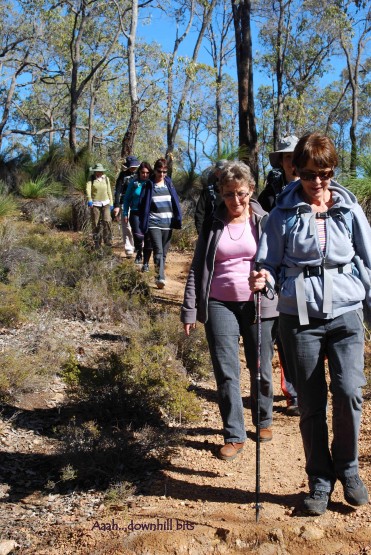Too busy to prepare for a walking tour?

Too busy to prepare for a walking tour?
Posted on
So you’ve booked yourself onto a walking tour. You’re probably pretty excited. And a little nervous.
There is one thing that EVERYONE has in common before doing a long walk – the doubt. Am I fit enough? Will I make it to the end? Am I crazy?
If you’re here reading this post, it’s a sign of rational, logical thought processes. So chances are you’re not (particularly) crazy. Whether you’re fit enough or you’ll make it to the end is another story, and it usually comes down to these two factors.
1. Did you look after any pre-existing injuries?
Old injuries can flair up on walking tours. It could be a 5 year old dodgy knee injury or a long forgotten sore back. It’s really important to be conscious of these injuries and get on top of them. Braces for the knees, ankles, back etc are good – bring them with you. And nothing beats good old fashioned rehab (if you’re anything like me, you were probably too busy to do all of the exercises the physio prescribed).
So spend some time building up, or protecting areas of your body that you know are weak to avoid those annoying flair-ups.
2. Did you do any training for you walking tour?
I hate the word training. Training for a holiday! That makes me what to run to the closest travel agency and book a week of cocktail therapy in Noosa Dua. To avoid excessive pool side alcohol consumption, let’s settle on the term “preparation”. This is exactly what you want to do – prepare your body for the activity which you will undertake on your walking tour.
Despite the semantics, even preparation takes time. If you are working full time then you will probably find it hard to dedicate Saturdays for the next six weeks to go walking for 20 kms. If you are retired, then you have absolutely no time at all and you need our help!
Busy person’s guide to preparing your body for a walking tour.
Step one: Start
This definitely helps! Make a commitment to doing some preparation today (or if you are retired, maybe start tomorrow). No time like the present to get the ball rolling.
Step Two: Walk
Yes, I can do that you say! Your right, but here’s the trick. If you can’t afford to spend the time doing long walks to prepare (which is best), then walk faster and harder. If all you have is 45 minutes three times a week, then it’s time to push the pavement. If you’re not sweating and feeling your heart pumping, then it’s probably not making much of a difference. Just make sure you do a gentle warm up and cool down to prevent injuries.
Try to match you preparation walks to the terrain that you will be doing on your walking tour. So, if you’re doing the Cape to Cape Track, make sure you get some walks on sand, and throw in some hills. If you are doing the Camino De Santiago, then make sure you are slightly hungover and surrounded by 21 year-old backpackers.
Step Three: Add weight
I think I actually just heard you say “is this guy crazy”… but I’m not. Not much any way.
Strapping on a backpack and adding some weight into it is a great way to prepare your body. I recommend this to anyone going on a walking tour, busy or not. 9 times out of 10 you will be wearing a small backpack on your actual walk, so it makes sense to wear one when you’re getting into shape. Even a few kilos on the back can make a difference for some, so you want to be comfortable with this weight before you go.
Step Four: Going up
Stairs and hills are the best thing since society came to realise how bad sliced bread is. Scaling stairs combines walking with weights training and it works all of the big walking muscles. Start off one stair at a time and increase to two stairs at a time as you get stronger. You will find muscles that you haven’t used since those calisthenics classes.
Step Five: Sneaky Squats
Squats are the best exercise since someone posted about stairs. The benefit of squats over stairs, is that you can do them anywhere. They may not let you back into Woolworths, but you can do them anywhere… and they don’t take long. Bust out 20 squats here and there and you will have new muscles in days. Elevator empty? Get squatting. Waiting for the kettle to boil? Perfect time for 10 quick squats. You’ll be walk-fit for your walking tour in no time at all. Here’s a post on getting your squatting technique right.
There are lots of other exercises you can do to prepare for your walking tour. The main thing is: if you can’t train for very long, raise the intensity.
If you can do as little as 45 minutes 3 or 4 times a week at a reasonably high intensity, then you are on your way to building fitness. Just remember to look after those knees!
What about you? Do you have any tips or favourite ways to get fit when you’re busy? Let us know in the comments below. We’d love to hear from you.



